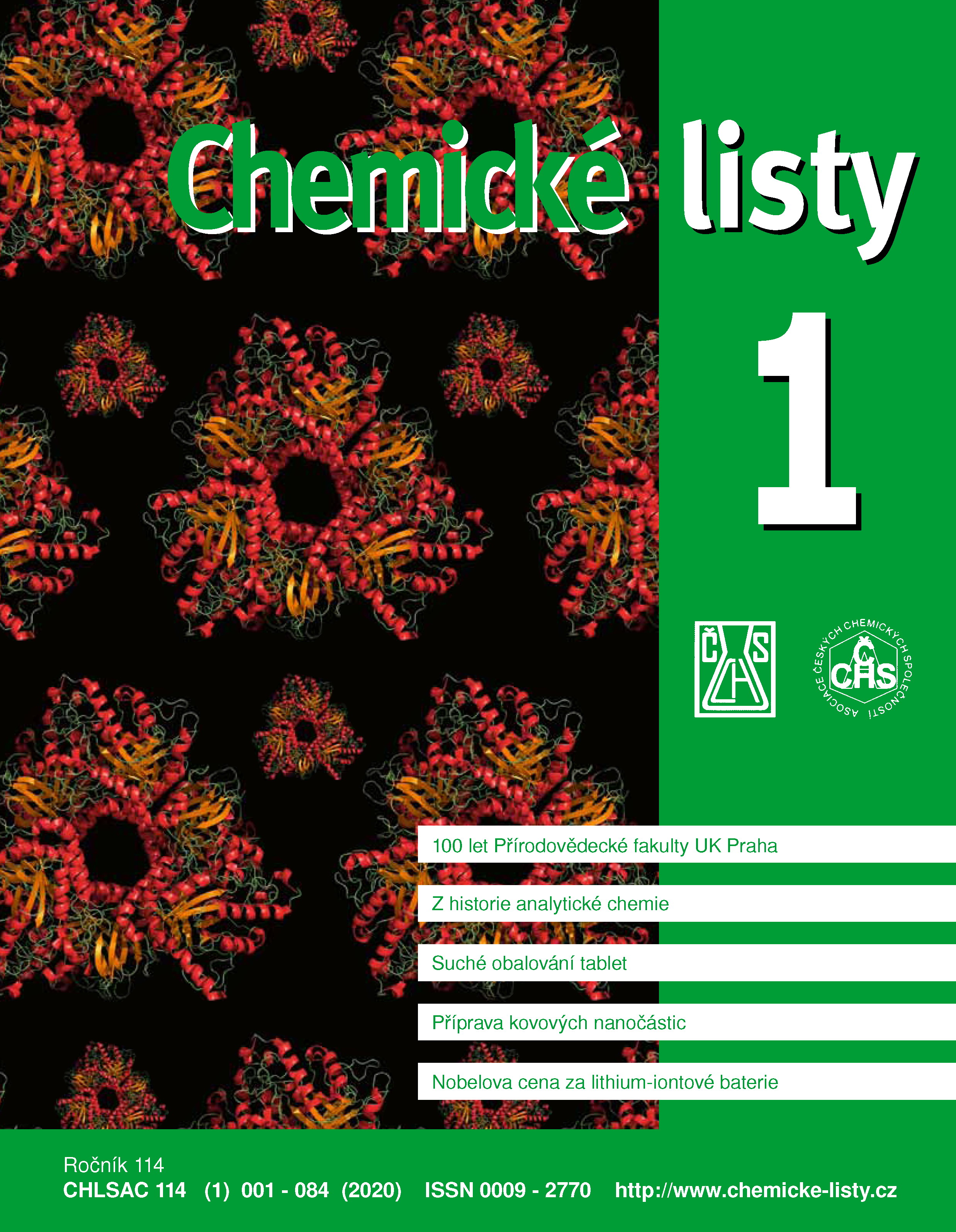Analytická chemie na Univerzitě Karlově před rokem 1920
Klíčová slova:
analytická chemie, dějiny vědy, didaktika, historieAbstrakt
Although analytical chemistry, as an independent discipline, appeared at Charles University in the 19th century, its history dates back to the beginning of the university, to the 14th century, six centuries before Faculty of Science of this University was established. Thus the local history of analytical chemistry represents an important part of the story of chemistry in the Czech Lands. At the beginning of the 17th century, university theses deal with the analysis of chemical problems only theoretically, on a mental level. During the 17th and 18th centuries, however, as in other European countries, analytical chemistry at the University has established itself as an important auxiliary science at the Faculty of Medicine. The Fathers Founders here include, in particular, Jan Marek Marci of Kronland (1595–1667), the discoverer of the separation of white light on a prism, which phenomenon he described eighteen years earlier than Isaac Newton. The founder of uninterrupted teaching of chemistry at Charles University is Professor Jan Antonín Scrinci (1697–1773). The present article brings the first evaluation of Scrinci's analytical-chemical publications and also draws attention to the presence of analytical chemistry topics in publications of the Faculty of Medicine in the 18th and 19th centuries. The rapid development of chemistry at the beginning of the 19th century resulted in a transition of chemistry as independent science to the Faculty of Arts in 1849. By reconstructing the line of succession of the most important representatives of analytical chemistry at the Charles University, including Bohuslav Brauner (1855–1935), one of the most important Czech chemists, the article portraits the successful development of analytical chemistry there. This resulted not only in the establishment of the Faculty of Science in 1920, but also created conditions leading later to the Nobel Prize for Professor Jaroslav Heyrovský for the discovery and development of the polarographic methods of analysis.





